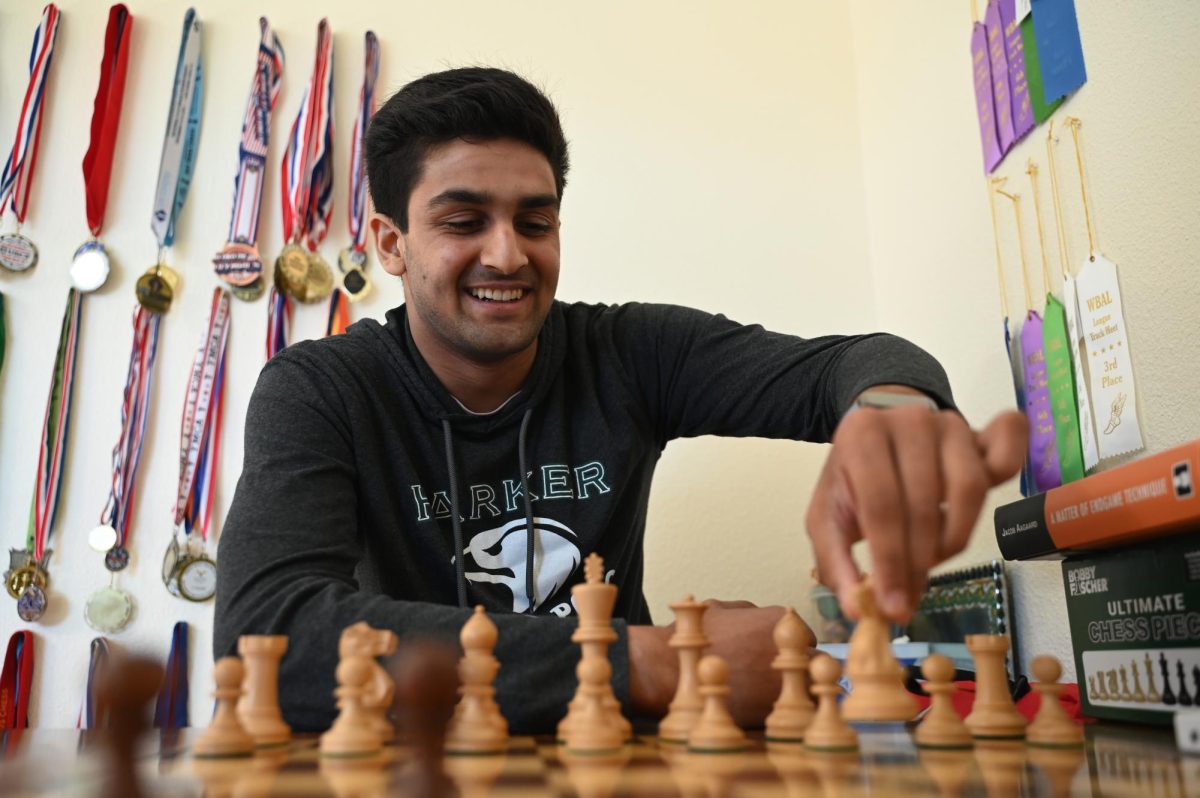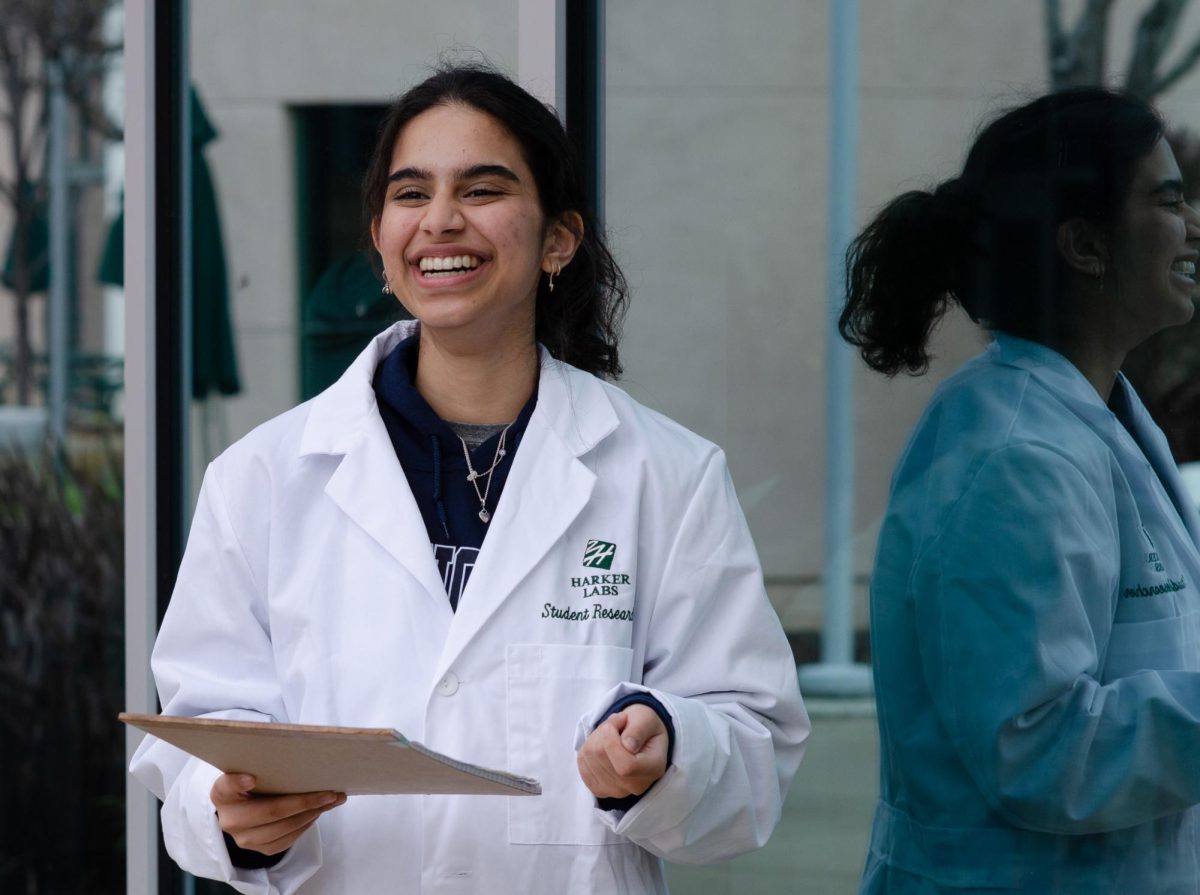Though weeks have elapsed since the Stanford University contact network experiment on January 14, researchers are still downloading data from the motes before they can begin the initial stages of data analysis.
After a year of preparation, their experiment investigating the spread of diseases finally came to life when students and faculty school-wide wore wireless motes, a low-powered sensory device, throughout the day.
Biologist and principal research investigator Dr. Marcel Salathé was first introduced to the research department in December 2008 through French teacher Nicholas Manjoine, whom he was once neighbors with. From there, Dr. Salathé contacted Dr. Kate Schafer, Biology and Research teacher, and they discussed the possibilities of conducting the team’s research experiment here at school.
“Immediately after I contacted Kate Schafer and Mr. [Butch] Keller, they were just going for it and being totally supportive, otherwise, this wouldn’t have ever happened,” Dr. Salathé said.
So far in research history, how diseases spread in a population was only understood on a theoretical level, which often made inaccurate assumptions of how people interact with each other. Dr. Salathé’s team, on the other hand, is investigating this topic with a different approach: to accurately research people’s interactions in a school, they suspended stationary motes on the walls of every classroom and had students and faculty wear wireless ones, costing about $60 a piece, that recorded their proximity with one another while powered.
“It’s amazing to be involved in this at all. No one else has done this; it’s cutting-edge research,” Butch Keller, Head of Upper School, said.
The sample size of the school was perfect for their experiment, and they also had just enough motes for everyone, receiving 796 motes with usable data and missing only three.
“I thought it was great research project because it wasn’t a hassle for us students, but they could still obtain a lot of data from [our help],” Jeffrey Tan (12) said.
“Our participation in the research showed how technologically advanced we are,” Timothy Chou (11) said. “It was great how almost every faculty and student participated. It really showed Harker’s scientific spirit.”
While the researchers are considering testing their research at other schools, the logistics required to organize such an experiment are immense.
“It’s just a long process doing and planning research,” Dr. Schafer said. “There’s a tremendous amount of logistics involved in this study. It takes a lot of work to plan something of this scale.”
The Stanford Biology department joined with the computer science department, which was involved in the implementation of technology into the project.
“Collaboration is not very common, nor is it easy because you need to be able to talk to people from different fields, and they have to be willing to cooperate with you,” Dr. Salathé said. “It’s much easier for people to just sit in their offices and do their thing, but in the end of the day, the projects are much more exciting.”
Jung Woo Lee and Maria Kazandjieva, PhD students from the Stanford computer science department, were also present on January 14 to help supervise the experiment. As computer scientists, they worked under the guidance of Professor Philip Levis with programming the code for the motes, building the hardware, and testing the devices before incorporating them to the actual experiment.
“I think that it’s really cool and really interesting that they chose Harker out of all the schools they could possibly do it at. In general, it is really cool because of the interdisciplinary research [in biology and computer science] and all its applications in science,” Rashmi Sharma (12) said.
Compiling the data requires a substantial amount of time, as they have to download the data from each and every individual mote to create the data set of the entire network population. According to Dr. Salathé, data analysis will then commence in a week or longer.
“Simulations and analysis will take some time. We want to do a really careful analysis. It is very rare that one has such an amazing data set at hands, and so we want to make sure we get as much information out of it as possible,” he said in an email correspondence.
Dr. Salathé and Dr. James Jones from the Department of Anthropology plan to analyze the structure of the social graph, run simulations with the graph, and make better assumptions on real-world situations. Because this is the first time this type of experiment has been done, any data would lead to interesting results.
“Nothing like this has ever been done at a school or any kind of setting, so this is a groundbreaking research project. This will greatly enhance our knowledge of how people interact in a social setting or in a school setting,” Dr. Schafer said. “We’re going to be at a radically new place at the end of this.”
After analyzing how pathogens spread theoretically, scientists could then say something about school closure ahead of time in case of an epidemic and deduce how effective it is in preventing disease spread.
“It’s not anything like Harker pride. It’s self pride that we could help further how viruses spread in a school population. I just think that’s really cool that we get to be part of something that could have huge effects in the future and some applications that we can’t even understand at this point,” Biology teacher Dr. Mathew Harley said. “Personally, I’m just proud that I could help this team do this experiment.”
Dr. Salathé and his team will return to school later this spring with their research results, data analysis, and many new insights into the world of diseases.


















![“[Building nerf blasters] became this outlet of creativity for me that hasn't been matched by anything else. The process [of] making a build complete to your desire is such a painstakingly difficult process, but I've had to learn from [the skills needed from] soldering to proper painting. There's so many different options for everything, if you think about it, it exists. The best part is [that] if it doesn't exist, you can build it yourself," Ishaan Parate said.](https://harkeraquila.com/wp-content/uploads/2022/08/DSC_8149-900x604.jpg)




![“When I came into high school, I was ready to be a follower. But DECA was a game changer for me. It helped me overcome my fear of public speaking, and it's played such a major role in who I've become today. To be able to successfully lead a chapter of 150 students, an officer team and be one of the upperclassmen I once really admired is something I'm [really] proud of,” Anvitha Tummala ('21) said.](https://harkeraquila.com/wp-content/uploads/2021/07/Screen-Shot-2021-07-25-at-9.50.05-AM-900x594.png)







![“I think getting up in the morning and having a sense of purpose [is exciting]. I think without a certain amount of drive, life is kind of obsolete and mundane, and I think having that every single day is what makes each day unique and kind of makes life exciting,” Neymika Jain (12) said.](https://harkeraquila.com/wp-content/uploads/2017/06/Screen-Shot-2017-06-03-at-4.54.16-PM.png)








![“My slogan is ‘slow feet, don’t eat, and I’m hungry.’ You need to run fast to get where you are–you aren't going to get those championships if you aren't fast,” Angel Cervantes (12) said. “I want to do well in school on my tests and in track and win championships for my team. I live by that, [and] I can do that anywhere: in the classroom or on the field.”](https://harkeraquila.com/wp-content/uploads/2018/06/DSC5146-900x601.jpg)
![“[Volleyball has] taught me how to fall correctly, and another thing it taught is that you don’t have to be the best at something to be good at it. If you just hit the ball in a smart way, then it still scores points and you’re good at it. You could be a background player and still make a much bigger impact on the team than you would think,” Anya Gert (’20) said.](https://harkeraquila.com/wp-content/uploads/2020/06/AnnaGert_JinTuan_HoHPhotoEdited-600x900.jpeg)

![“I'm not nearly there yet, but [my confidence has] definitely been getting better since I was pretty shy and timid coming into Harker my freshman year. I know that there's a lot of people that are really confident in what they do, and I really admire them. Everyone's so driven and that has really pushed me to kind of try to find my own place in high school and be more confident,” Alyssa Huang (’20) said.](https://harkeraquila.com/wp-content/uploads/2020/06/AlyssaHuang_EmilyChen_HoHPhoto-900x749.jpeg)








